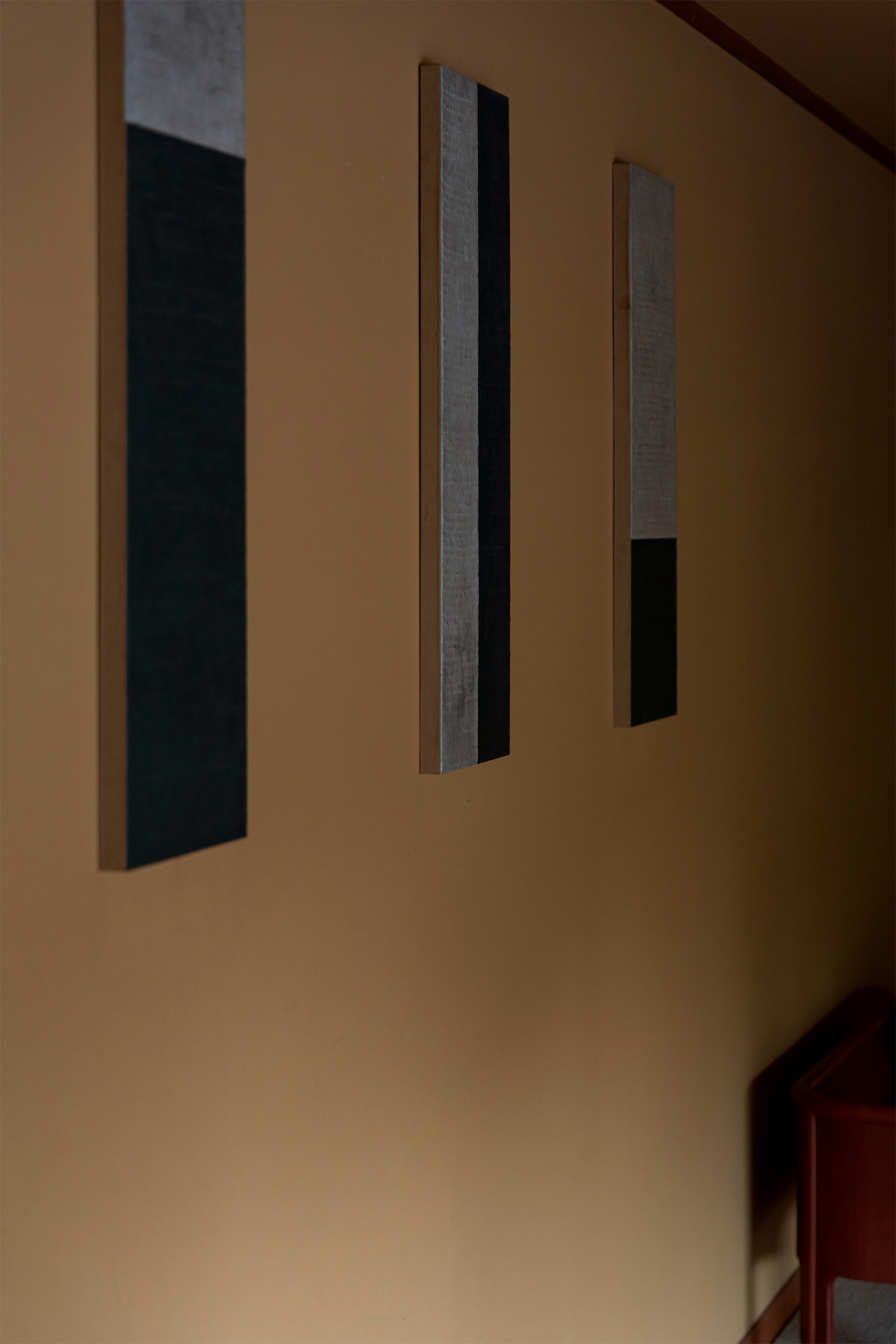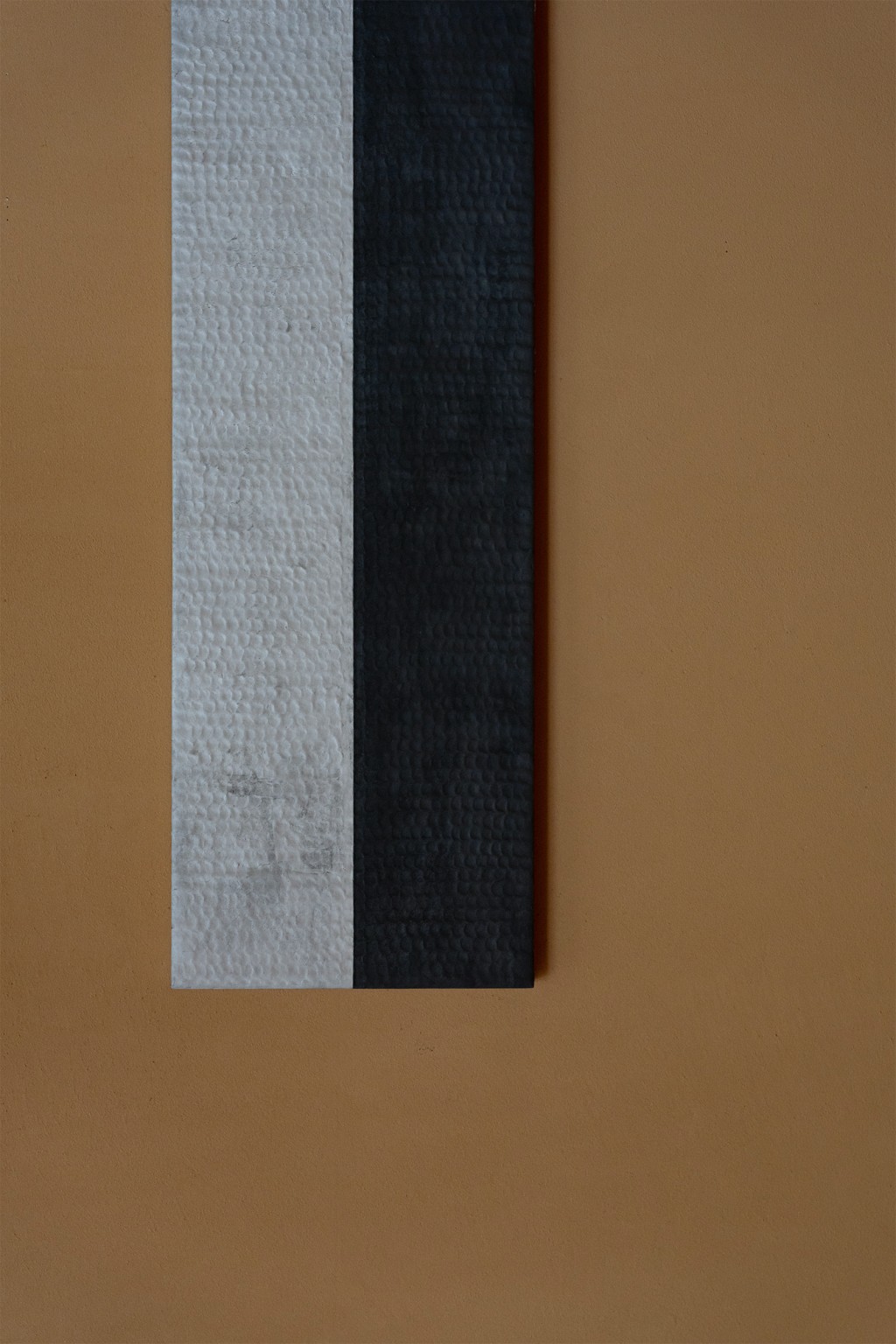
華野の世界観を象徴する玄関正面の三部作
高山荘 華野の玄関正面に入ると、まず目に飛び込んでくるのは、現代美術家・橋場信夫(はしば のぶお)氏による抽象画3点です。
日本古来の「室礼(しつらい)」の精神を現代美術に取り入れた第一人者として知られる橋場氏の作品は、光と影、静と動、そして“間”の美を見事に表現しています。
3点の作品はいずれもモノシリックな構成で、銀色のような光沢を放つ明部と、深淵を思わせる漆黒が織りなすコントラストで構成されています。細部に施された陰影や質感は、まるで和紙や漆のような温もりを感じさせ、日本の伝統的な美意識を内包しながらも、同時に現代的な冷ややかさと洗練を兼ね備えています。
それらが均等に配置されることで、玄関という空間全体がひとつの橋場信夫作品として完成し、訪れる人を静かに包み込みます。
橋場信夫氏は、国内外で高い評価を受けており、東京国立近代美術館や京都国立近代美術館などの展覧会にも出展。彼の作品は“無音の詩”とも評され、見る者の感情や記憶を静かに呼び覚まします。
華野の館主は、師事する華道家の作品の背後に飾られていた光景に深く感銘を受けたといいます。「華野の象徴にしたい」との想いから、この3点を玄関の特等席に据えました。
現在では、客室廊下やレストランにも橋場氏の作品が展示されており、その静謐で深遠な世界観が、華野全体を貫く“アートの宿”としての個性を際立たせています。
The Entrance Triptych: Essence of Hanano’s Aesthetic
Upon entering the main entrance of Takayamaso Hanano, guests are immediately greeted by three abstract paintings by the contemporary artist Nobuo Hashiba.
Renowned as a pioneer who integrates the Japanese spirit of shitsurai — the traditional art of spatial arrangement — into modern art, Hashiba’s works beautifully embody the interplay of light and shadow, stillness and motion, and the subtle aesthetics of ma.
Each of the three pieces presents a monolithic composition, defined by a striking contrast between luminous silver-like highlights and profound black tones suggestive of infinite depth.
The delicate shadows and textures evoke the warmth of materials such as washi paper or lacquer, conveying both the quiet sensitivity of traditional Japanese aesthetics and the refined clarity of modern expression.
Placed in balanced alignment, the works transform the entire entrance hall into a unified Hashiba creation—an immersive, meditative space that gently embraces every visitor.
Hashiba’s art has been exhibited at the National Museum of Modern Art in Tokyo and Kyoto, earning international acclaim. His creations are often described as “silent poetry,” evoking emotions and memories in a wordless dialogue with the viewer.
The owner of Hanano, deeply moved by the presence of Hashiba’s paintings once seen behind the floral works of his own mentor in kado (the Japanese art of flower arrangement), chose to enshrine this triptych at the entrance as a symbolic expression of the inn’s philosophy.
Today, additional works by Hashiba can be found in the guestroom corridors and the restaurant, their serene and profound presence uniting the entire inn in a single, harmonious narrative — defining Hanano as an inn where art itself breathes.

